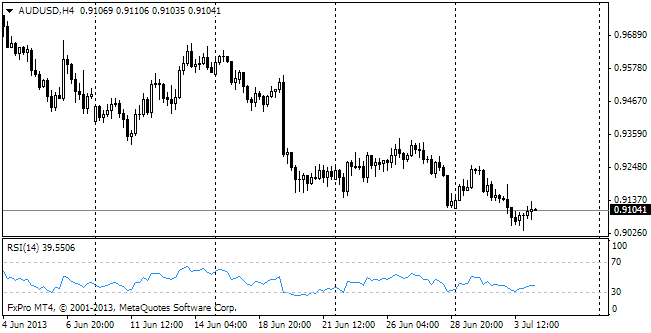EUR/usd
As we warned about at the beginning of the week, the dollar has commenced retreating. Lockhart's and Evans's claims provided only temporary support to the dollar. Further, other factors like improvement in Europe have come into the play. Technically, the dollar is affected by the fact that many currencies of the developing countries have become overbought over the preceding months. In such circumstances the US currency will find it hard to grow. The dollar is more willingly purchased in the times of uncertainty. And now we find more and more signs of faster growth of the developed economies. At least now it is clearly observed in Europe, the USA and Japan. Earlier in similar conditions the USA was quickly followed by the developing countries, which having cheap labour served the consumption growth in the developed world. The same interaction should happen this time again. If the correlations work as they did before ( and we don't doubt it yet), in the coming months we'll see more and more signs of recovery in the developing markets, which is likely to decrease demand for the dollar. Now eurusd is trading above 1.33, where it settled down yesterday. From the current levels of 1.3330 the bulls may see their immediate target at 1.34, which the pair reached late in June. As it seems now, there shouldn't be any problems with breaking through this level.

GBP/USD
Yesterday Carney caused a real stir in the markets. It's also noteworthy that the initial reaction of the market to sell the sterling has sharply turned into an even faster growth. As a result, the difference between the intraday low and high made more than 3 figures over less than 6 hours. The BOE promised to focus on the unemployment rate in its policy, of course with an eye to inflation. On the whole, this approach resembles the one of the Fed's only with a few reservations. In line with the current strategy the Bank will consider tightening of the policy when unemployment sinks below 7% and/or when the inflationary forecast for the coming two years exceeds 2.5%. According to the BOE's forecasts, unemployment will remain higher till 2016. Yet, the market believes that in such circumstances the policy will be tightened much earlier, this is exactly what caused a tide of purchases in the sterling.

AUD/USD
The aussie keeps rallying against the news. The employment rate in the country shrank by 10.2K in July versus the expected growth by 6.2K. Furthermore, the share of the economically active population fell from 65.3 to 65.1%, which is also worse than forecasted. Anyway, just like in case with the RBA's rate at the beginning of the week, the Australian dollar feels up to growing. Now audusd is trading at 0.9050, which is two figures above the low set at the start of the trading week.

USD/JPY
The time of big shake-ups and significant moves on the officials' claims has passed for the yen. Today's meeting of the Bank not only hasn't brought any new claims regarding the monetary policy, but also hasn't given any reconsideration to the economic conditions. As a result, usdjpy has stalled at 96.60, but for all that is a bit above yesterday's low at 96.30.
